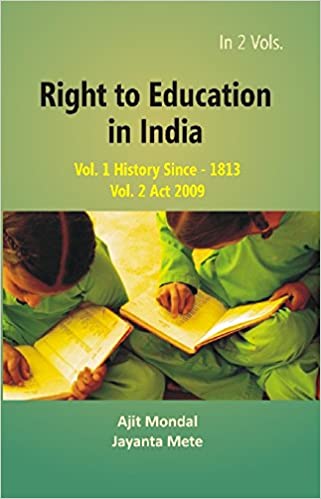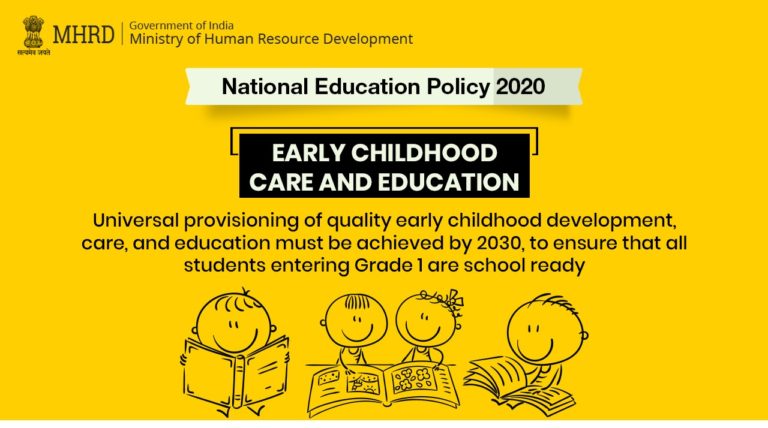
On August 4, 2009, the Indian parliament passed the Right to Education Act 2009, popularly known as the RTE Act 2009. Article 21(A) of the Indian Constitution, explains the necessity of free and mandatory education for children aged 6 to 14 in India. With the implementation of this act on April 1, 2010, India joined the list of 135 nations that have made education a fundamental right for all children. It establishes basic standards for primary schools, outlaws the operation of unrecognised institutions and opposes admission fees and kid interviews. Through routine surveys, the Right to Education Act monitors all neighbourhoods and identifies children who qualify.
In India, there have long been significant educational issues at the national level as well as in the states. The Right to Education Act of 2009 outlines the task and obligations of the federal government of each state and all local governments in order to close any gaps in the nation’s educational system.
In India, the government is required to provide free and required primary education to each and every child, up to class 8, in a neighbourhood school within a 1 km radius. No child is required to pay any fees or other costs that would prohibit them from pursuing and finishing their basic education.
The Right to Education Act establishes guidelines and requirements for classrooms, boys’ and girls’ restrooms, drinking water facilities the number of school days and working hours of teachers, among other things.
According to the Right to Education Act, a child who is not enrolled in school must be accepted to a class for their age and get specialised instruction to help them catch up to age-appropriate learning levels.
The Right to Education assumes reasonable use of teachers by ensuring that the prescribed student-teacher ratio is maintained in each school without imbalance between urban and rural areas. Also, a properly trained teacher, i.H appoint teachers with the required admission qualifications and educational background.
The Right to Education Act 2009 regulates all forms of corporal and psychological harassment discrimination based on sex, caste, class and religion. It prohibits the operation of schools that does not.
No child is allowed to b held back or expelled from school until class 8, according to the Right to Education Act. In order to guarantee learning results that are acceptable for each grade in schools, the Continuous Comprehensive Evaluation (CCE) system was created in 2009 under the Right to Education Act.

This book reviews the historical emergence and development of the right to education in India from 1813 to 2009. It also considers key features, provisions, children’s rights, equity issues, assessment policies, teacher responsibilities, loopholes, and suggestions for the implementation of the Right to Education. Law, 2009. About the Author: Dr Ajit Mondal is currently teaching as an assistant professor of education at Surendranath College for women in Calcutta, West Bengal.
By announcing the New National Educational Policy on July 29, 2020, the Union Cabinet opened the door for fundamental change in the K-12 and higher education systems. They also changed the name of the MHRD to the ministry of education. This is the first educational policy of the twenty-first century that has replaced a 34 years old national education policy, which was initially introduced in the former national education policy in 1986. The four pillars of Access, Equity, Quality and Accountability form the foundation of the new NEP. The original 10+2 structure will be replaced by a 5+3+3+4 framework that includes 12 years of education and 3 years of Anganwadi/pre-school.
The COVID-19 pandemic, according to the UGC chairman, had an impact on the implementation of NEP, but they guarantee that if things return to normal, they will move forward with it more quickly. By 2030 a four-year integrated B.ED programme will be the required education for teaching. Ramesh Pokhriyal Nishank, the minister of education, stated that there are no plans to change the NEP’s reservation requirements. The chief minister of Meghalaya stated that a task force will be established to implement the new education policy and that Meghalaya would thereafter become the first state in the nation to do so.

Handcrafted with by eReleGo Technologies Pvt Ltd
We are located at

eReleGo Technologies Pvt Ltd
646, 52, 12th Main Rd,
2nd Block, Rajajinagar,
Bengaluru, Karnataka 560010
This website uses cookies to ensure you get the best experience on our website.